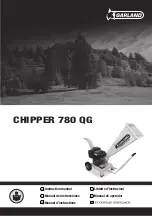
Vent Piping
Refrigerant Vent-Line
General Recommendations
State and local codes, and ASHRAE Standard 15 contain
requirements for venting the relief device on the chiller
to the atmosphere outside of the building. The require-
ments include, but are not limited to, permitted materi-
als, sizing, and proper termination.
Note:
The following information is a general outline
of vent-line installation requirements based on
ASHRAE Standard 15. Most codes contain similar
requirements but may vary in some significant ar-
eas. The installer must check state and local codes
and follow the specific requirements applicable to
the location.
Purge Discharge
To comply with ASHRAE Standard 15, the discharge pip-
ing from purge units that remove noncondensible gas
from refrigerating systems must conform to the ASHRAE
Standard 15 requirements for relief piping. To help meet
this requirement the purge discharge is factory-piped to
the relief device assembly.
Vent-Line Materials
All materials in the relief device vent system must be
compatible with the refrigerant in use. Commonly used
and accepted piping materials include steel and DWV
(drain/waste/vent) copper. Consult local codes for restric-
tions on materials. Consult with the manufacturers of
any field- provided components or materials for accept-
able material compatibility.
Note:
PVC piping is compatible with R-123, but the glue
that joins the sections of plastic pipe may not be.
When considering a vent system constructed of
plastic piping, such as PVC, make sure that both
the pipe material and the adhesive have been
tested for refrigerant compatibility. Also, verify
that the local code permits PVC for refrigerant
vent lines; even though ASHRAE Standard 15
doesn’t prohibit its use, some local codes do.
Testing conducted in Trane laboratories has qualified the
following materials for PVC pipe construction as being
compatible with R-123:
Primer - Hercules, PVC Primer #60-465, RectorSeal PVC
Cleaner - Smiling Sam CL-3 Adhesive - Hercules, Clear
PVC, Medium Body, Medium Set, #60-020 RectorSeal
PVC Cement –Green Gene 104.
Flexible connection devices for vibration isolation must
also be compatible with the vented refrigerant. A flex-
ible stainless-steel pump connector, such as the stain-
less-steel type MFP, style HNE, flexible pump connector
(from Vibration Mounting and Control, Inc.), or equiva-
lent, is recommended.
Vent-Line Sizing
Vent-line size must conform to local codes and require-
ments. In most cases local codes are based on ASHRAE
Standard 15. ASHRAE Standard 15 provides specific
requirements for the discharge piping that allows pres-
sure-relief devices to safely vent refrigerant to the atmo-
sphere if over pressurization occurs. In part, the standard
mandates that:
•
The minimum pipe size of the vent-line must equal
the size of the discharge connection on the pres-
sure-relief device. A larger vent-line size may be
necessary, depending on the length of the run.
•
Two or more relief devices can be piped together—
but only if the vent line is sized to handle all devices
that could relieve at the same time.
•
When two or more relief devices share a common
vent line, the shared line must equal or exceed the
sum of the outlet areas of all upstream relief devices,
depending on the resulting back pressure.
Section 9.7.8.5 of ASHRAE Standard 15-2007 provides
guidance for determining the maximum vent-line length.
Appendix H of the standard provides the equation (shown
in
) and data necessary to properly size
the vent line at the outlet of a pressure-relief device or
fusible plug. The equation accounts for the relationship
between pipe diameter, equivalent pipe length, and the
pressure difference between the vent-line inlet and outlet
to help assure that the vent-line system provides suffi-
cient flow capacity.
As a further aid,
in the ASHRAE Stan-
dard 15 lists the capacities of various vent-line sizes and
lengths; however, that data only applies to conventional
pressure-relief valves and NOT to balanced relief valves,
rupture members (as used on Trane centrifugal chillers),
fusible plugs, or pilot-operated valves.
provide a simpli-
fied method to determine the appropriate vent- line size.
Enter
with the total “C” value, read
across to a pipe curve and down to find the maximum
allowable length for that size pipe.
To determine the total “C” value for a specific unit, add
the appropriate “C” values for the evaporator, standard
condenser and economizer. If the unit is equipped with
any options (e.g., heat recovery, free cooling, or an aux-
iliary condenser), add the applicable “C” value(s) to this
total
Note:
The Table and Figure are only applicable for
non-manifolded vent-line runs connected to a
15 psi rupture disc relief device. The pipe length
provided by the table is in “equivalent feet.” The
26
RELEASED 10/Mar/2020 06:59:20 GMT
















































